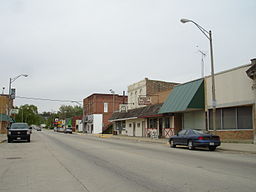 Mayor Riley Rogers walked into something of a mess in the city of Dolton, Illinois located south east of Chicago. After being in office for less than a month, he faces the unpleasant prospect of not being able to meet staff payroll – roughly $500,000 – along with insurance payments due today.
Mayor Riley Rogers walked into something of a mess in the city of Dolton, Illinois located south east of Chicago. After being in office for less than a month, he faces the unpleasant prospect of not being able to meet staff payroll – roughly $500,000 – along with insurance payments due today.
This story, posted in Chicago Tribune, is disappointing – primarily because it seems to be happening almost every week now. According to Rogers, all of the village’s bank accounts are empty. On top of this grim fact, earlier this week, village trustees voted unanimously to approve a loan from a tax increment financing (TIF) account. TIF dollars are designated for economic development projects. Because of Dolton’s financial circumstances, the village is drawing from TIF dollars to keep the village solvent instead of using them on projects that could potentially enhance the quality of life for Dolton residents. I suppose having a solvent village comes first.
The budget shorftall is blamed on years of overspending, including bad development projects that failed to generate revenue, and overtime pay for public safety officials. And of course, the usual culprit of lack of oversight weighs heavily on current circumstances. Treasurer Mike Willis said the village hasn’t had a balanced budget since at least 2009 and that since 2010 the village has faced deficits of about $11 million.
What is troubling about Dolton’s situation is that it represents a trend in municipal governments around the country, to kick the can of responsibility down the road. Cities have become startling reactive to just about everything – lagging behind in making the tough policy decisions that will undoubtedly impact both the city administration and the city’s residents down the line. Rogers served as a village trustee for two years before becoming mayor, and both saw and approved the village budget during that time. The onus rests in the hands of those who have been aware of the village’s financial situation, to speak up and advocate for either austerity measures to be put in place, or a complete restructuring of the city’s role. If collecting taxes has been a weak point, the city must initiate new ways of collecting debts owed to the city. Likewise, the city must be prepared to prioritize services so as to avoid overspending on non-essential projects and initiatives. And of course, municipalities must devise criterion for approving projects to ensure that they do generate revenue. This means perhaps passing over projects that sound exciting or trendy – especially when the revenue generating prospects for the city are shaky at best.
Instead, municipal leaders do the easiest thing to make a quick buck: increase city stickers, fees and fines. In other words, instead of thinking proactively and creatively about how to adjust the city’s function so that it can serve the public as well as remain solvent, cities are quick to pass on extra costs to residents, making life more difficult and in some cases, giving residents a reason to re-locate. Municipal leaders have to understand that increasing fees and fines is only a short-term solution to a long-term problem. In fact, it really isn’t a solution as all it does is contribute prolong the inevitable – making tough decisions in order to keep the city afloat.
Tough economic times means – not a scramble to figure out how to raise money – but an existential questioning of the role of government. In short, if municipal government is unable to stay solvent given its current function, then maybe its function must change. Unfortunately for many cities, they attempt to restructure and reorganize only after filing for bankruptcy (see Harrisburg, Pennsylvania and Stockton, California for example).
Hopefully Rogers is prepared for the rocky road that lies ahead. He and several other new mayors sworn in weeks ago, must commit to running their cities differently if they want to avoid taking office with no money in the city’s accounts, or leaving office with no money in the city’s accounts.


















